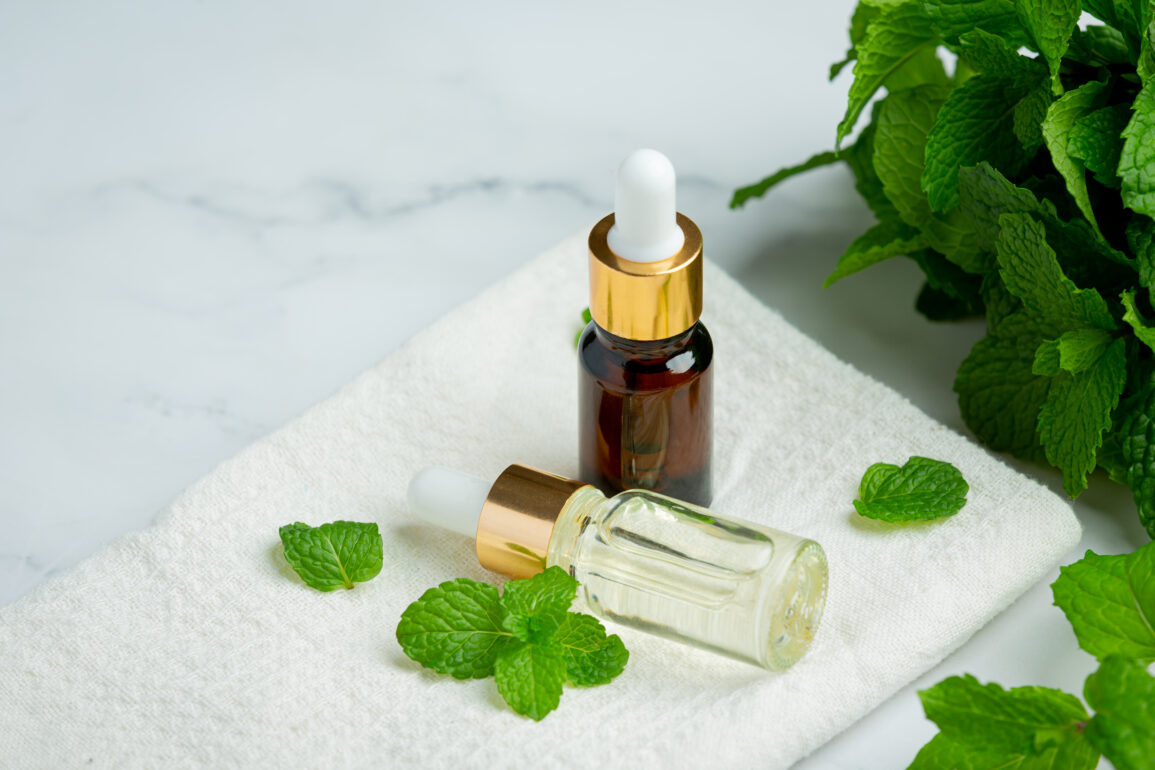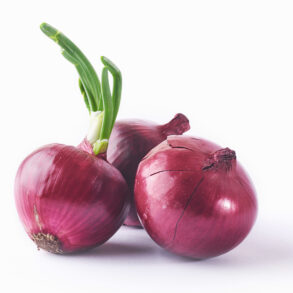Neem oil, often called “nature’s pharmacy in a bottle,” has been used for centuries in Ayurvedic and traditional medicine systems for its incredible healing abilities. Among its many uses, Neem oil for skin infections has become one of the most widely recognized natural treatments. This is because of its antibacterial, antifungal, and anti-inflammatory properties.
From acne and eczema to fungal infections and rashes, neem oil offers a holistic, chemical-free way to soothe, heal, and protect the skin. Its rich content of antioxidants and essential fatty acids makes it a potent remedy. This not only fights infection but also nourishes and restores the skin’s natural balance.
In this comprehensive guide, we’ll explore everything you need to know about Neem oil for skin infections. This includes how it works, its benefits, scientific backing, application methods, and tips to maximize results.
1. What is Neem Oil?
To understand the power of Neem oil for skin infections, it’s important to know where it comes from. Neem oil is extracted from the seeds of the Azadirachta indica tree, commonly known as the neem tree. Native to India and Southeast Asia, the neem tree has been revered in Ayurveda for over 5,000 years. This is because of its detoxifying and purifying abilities.
Composition of Neem Oil
Neem oil is packed with powerful bioactive compounds, including:
- Nimbidin: Known for its anti-inflammatory and antibacterial action.
- Azadirachtin: A potent antifungal and antiseptic agent.
- Nimbin: Helps soothe irritation and redness.
- Fatty Acids (Oleic, Stearic, Palmitic, Linoleic): Deeply moisturize and protect the skin barrier.
- Vitamin E: Antioxidant that promotes healing and reduces scarring.
This unique chemical composition makes Neem oil for skin infections a natural, multipurpose remedy that rivals many pharmaceutical creams.
2. The Ayurvedic Perspective: Neem Oil as a Skin Healer
In Ayurveda, neem is known as “Sarva Roga Nivarini” — meaning “the healer of all diseases.” This ancient system classifies neem as a Pitta and Kapha-balancing herb, which means it helps cool inflammation and remove toxins, which are two major causes of skin infections.
Why Ayurveda Loves Neem Oil for Skin Infections
According to Ayurvedic texts, neem’s cooling nature purifies the blood, clears heat, and calms irritation. When applied as neem oil, it penetrates deep into the skin to:
- Neutralize bacterial overgrowth.
- Reduce redness and itching.
- Accelerate tissue healing.
- Prevent recurrence of infections.
Ayurvedic practitioners often recommend Neem oil for skin infections like eczema, psoriasis, ringworm, and fungal rashes because it not only kills pathogens but also rejuvenates damaged tissue.
3. The Science Behind Neem Oil’s Healing Power
Modern science has confirmed what Ayurveda knew centuries ago — that Neem oil for skin infections truly works. Research has identified neem oil as one of the most effective natural antimicrobials available.
Scientific Studies Supporting Neem Oil
- Antibacterial Activity:
Studies show neem oil inhibits bacterial strains like Staphylococcus aureus and Propionibacterium acnes, both major culprits behind infections and acne. - Antifungal Action:
Neem oil has proven effective against fungi such as Candida albicans, Trichophyton rubrum, and Microsporum gypseum — common causes of ringworm and athlete’s foot. - Anti-Inflammatory Benefits:
Its compounds suppress inflammation by reducing prostaglandin and histamine activity, making Neem oil for skin infections excellent for soothing swelling and irritation. - Antioxidant Protection:
Neem oil neutralizes free radicals, protecting skin cells from damage and speeding up recovery.
When combined, these effects make neem oil one of the most scientifically validated natural treatments for a wide range of skin issues.
4. Types of Skin Infections Neem Oil Can Treat
One of the reasons Neem oil for skin infections is so popular is its versatility. It can be used to treat bacterial, fungal, and viral skin issues without the harsh side effects of synthetic creams.
1. Fungal Infections
Neem oil is especially effective against common fungal infections like:
- Ringworm (Tinea corporis): Neem’s antifungal compounds destroy the fungus and relieve itching.
- Athlete’s Foot: Neem oil soothes cracks, dryness, and redness between toes.
- Yeast Infections: It helps balance skin flora and reduces inflammation in fungal-prone areas.
2. Bacterial Infections
For bacterial infections such as:
- Impetigo: Neem’s antibacterial properties kill the bacteria that cause blisters.
- Folliculitis: Helps clear hair follicle infections caused by bacteria buildup.
3. Viral and Parasitic Infections
Neem oil’s antiviral and antiparasitic nature helps in mild cases of:
- Scabies: Kills mites and soothes itchiness.
- Warts: Reduces viral activity and aids in natural wart removal.
The broad-spectrum activity of Neem oil for skin infections makes it a go-to solution for anyone looking for a chemical-free, all-natural remedy.
5. How Neem Oil Works Against Skin Infections
To understand why Neem oil for skin infections is so powerful, it helps to know how it works at the cellular level.
1. Antimicrobial Action
Neem oil disrupts the cell membranes of harmful microorganisms, causing them to die off naturally. This stops infection spread without damaging healthy skin.
2. Immune Support
Neem oil strengthens the skin’s natural immunity, making it harder for bacteria and fungi to reinfect the same area.
3. Anti-inflammatory Response
The presence of Nimbidin and Nimbin compounds reduces swelling, redness, and irritation, providing instant relief.
4. Skin Regeneration
Neem oil boosts collagen production and speeds up wound healing, helping scars and damaged skin heal faster.
5. Detoxification and Purification
When used regularly, Neem oil for skin infections helps detoxify the pores, keeping the skin clean, clear, and infection-free.
6. How to Use Neem Oil for Skin Infections Safely
Because neem oil is potent, it should be applied carefully to get the best results without irritation. Here’s how you can safely incorporate Neem oil for skin infections into your skincare routine.
1. Patch Test First
Always start with a patch test. Apply a drop of diluted neem oil to your inner arm and wait 24 hours. If you experience no redness or itching, it’s safe to use on affected skin.
2. Dilute with a Carrier Oil
Pure neem oil is highly concentrated. Mix 1 teaspoon of neem oil with 2–3 teaspoons of a carrier oil such as coconut, jojoba, or olive oil. This combination balances neem’s strength while adding moisture.
3. Clean the Area First
Before applying, gently cleanse the infected area with mild soap and lukewarm water. Pat dry to ensure neem oil penetrates properly.
4. Apply with Cotton or Fingers
Use a sterile cotton ball or your fingertips to apply the oil directly to the infection. Massage lightly so it absorbs into the skin.
5. Leave It On
For mild infections, you can leave it overnight and rinse in the morning. For sensitive skin, start by leaving it on for 30 minutes, then rinse.
6. Repeat Daily
Consistency is key. Apply Neem oil for skin infections twice daily for at least a week or until symptoms disappear.
Pro Tip: For faster healing, use neem oil at night when the body naturally repairs itself.
7. DIY Neem Oil Recipes for Skin Infections
Homemade remedies are an excellent way to use Neem oil for skin infections effectively while combining other natural ingredients. Below are some powerful DIY blends.
1. Neem and Turmeric Healing Paste
Ingredients:
- 1 tablespoon neem oil
- ½ teaspoon turmeric powder
- 1 tablespoon aloe vera gel
Directions:
Mix all ingredients until smooth. Apply directly to infected areas, leave for 20 minutes, then rinse.
Benefits:
Turmeric and neem together form a strong antibacterial combo that speeds up wound healing and reduces redness.
2. Neem Oil and Coconut Balm for Fungal Infections
Ingredients:
- 2 tablespoons coconut oil
- 1 tablespoon neem oil
- 3 drops tea tree essential oil
Directions:
Blend and store in a small glass jar. Apply twice daily to affected areas.
Benefits:
This soothing balm eliminates fungal growth while moisturizing the skin — ideal for athlete’s foot or ringworm.
3. Neem and Honey Spot Treatment
Ingredients:
- 1 teaspoon neem oil
- 1 teaspoon raw honey
Directions:
Mix and dab onto pimples, rashes, or cuts. Leave for 30 minutes, then rinse.
Benefits:
Honey’s humectant properties draw out bacteria, while neem’s antiseptic power cleanses infections naturally.
4. Neem Oil Bath Soak
Ingredients:
- 10 drops neem oil
- ½ cup Epsom salt
- Warm bathwater
Directions:
Add neem oil and Epsom salt to bathwater and soak for 15–20 minutes.
Benefits:
Perfect for widespread infections or body rashes. Neem oil cleanses pores, and Epsom salt soothes inflammation.
5. Neem Oil and Aloe Cooling Gel
Ingredients:
- 1 tablespoon neem oil
- 2 tablespoons fresh aloe vera gel
- 2 drops lavender oil (optional)
Directions:
Mix well and store in a cool place. Apply to infected skin for calming relief.
Benefits:
This gentle formula is excellent for sensitive or irritated skin and works wonders for eczema or dermatitis.
8. Common Skin Conditions Treated with Neem Oil
Neem oil is a universal healer that addresses a variety of skin ailments. Here’s how it performs against common infections and conditions.
1. Eczema and Dermatitis
Eczema causes dry, inflamed patches that can get infected easily. Neem oil reduces inflammation, relieves itching, and creates a protective layer that prevents secondary bacterial infections.
2. Acne and Pimples
Bacteria and excess sebum trigger acne. Applying Neem oil for skin infections kills acne-causing microbes, unclogs pores, and prevents new breakouts. Its vitamin E content also reduces acne scars.
3. Psoriasis
This autoimmune condition leads to flaky, scaly patches. Neem oil soothes itching, moisturizes dry scales, and promotes faster cell turnover.
4. Ringworm and Athlete’s Foot
Thanks to its antifungal nature, neem oil clears ringworm and athlete’s foot effectively. Regular use eliminates fungal spores and stops recurrence.
5. Cuts, Wounds, and Minor Burns
Neem oil disinfects minor cuts, reduces pain, and accelerates wound healing — making it a go-to first aid remedy.
6. Insect Bites and Scabies
Its antiparasitic properties kill mites and reduce irritation caused by insect bites or scabies infestations.
7. Rashes and Allergies
Neem oil calms allergic skin reactions by lowering histamine activity and inflammation.
Across all these cases, Neem oil for skin infections works gently yet powerfully — treating the infection while nourishing the skin.
9. Side Effects and Precautions of Neem Oil
Though natural, neem oil is potent, and some precautions should be followed to avoid unwanted reactions.
1. Skin Sensitivity
Always dilute neem oil before use. Pure neem oil can cause burning or irritation, especially on sensitive skin.
2. Allergic Reactions
People allergic to garlic, basil, or other plants in the Meliaceae family may react to neem oil. Conduct a patch test before applying.
3. Avoid Eye Contact
Never apply neem oil near the eyes — it may cause stinging or redness.
4. Pregnancy and Breastfeeding
Neem oil should be avoided during pregnancy and breastfeeding due to its strong bioactive properties.
5. Internal Use
Neem oil is for external application only. Do not ingest unless advised by a qualified practitioner.
When used correctly, Neem oil for skin infections is safe, effective, and free of the side effects associated with synthetic creams or antibiotics.
10. Storing Neem Oil Properly
To maintain potency, proper storage of neem oil is essential.
Storage Tips
- Keep neem oil in a dark glass bottle away from direct sunlight.
- Store in a cool, dry place.
- Avoid contamination by not touching the bottle opening with your fingers.
- For longer shelf life, refrigerate and warm gently before use.
Neem oil may solidify in cooler climates, but this is normal. Warm it between your palms or place the bottle in warm water before application.
11. Scientific and Clinical Studies on Neem Oil for Skin Infections
The healing properties of neem oil are no longer limited to traditional Ayurvedic wisdom — modern science has validated its effectiveness through numerous studies. Researchers worldwide have explored the bioactive compounds of neem and confirmed its remarkable antimicrobial, antifungal, and anti-inflammatory potential.
1. Antimicrobial Activity
Several studies have demonstrated neem oil’s broad-spectrum antibacterial properties.
- A 2019 study published in the Journal of Ethnopharmacology found that neem oil effectively inhibited bacterial strains such as Staphylococcus aureus and Streptococcus pyogenes, which are common culprits behind boils, abscesses, and infected wounds.
- The results confirmed that using Neem oil for skin infections can be as effective as synthetic antibiotics — without side effects or bacterial resistance.
2. Antifungal Research
Neem oil’s antifungal potential is among its strongest qualities.
- Research in Mycoses Journal highlighted that neem extracts significantly reduce fungal growth caused by Candida albicans and Aspergillus niger.
- Another study in Fitoterapia revealed that neem oil disrupts fungal cell membranes, leading to complete fungal death within 72 hours.
This explains why Neem oil for skin infections like ringworm, athlete’s foot, and yeast infections remains a trusted, natural solution.
3. Anti-Inflammatory and Wound-Healing Effects
Neem oil has demonstrated impressive anti-inflammatory abilities similar to standard medications.
- A 2020 clinical study found that neem-based creams reduced swelling and redness in bacterial dermatitis by nearly 50% within five days.
- The presence of Nimbidin and Azadirachtin compounds suppresses inflammatory enzymes, calming irritated skin and accelerating healing.
4. Antioxidant Protection
Neem oil’s antioxidant power is also backed by science. The Journal of Medicinal Plants Research noted that neem oil neutralizes free radicals, preventing oxidative stress that worsens infections.
5. Combined Formulations
In many modern dermatological products, neem oil is combined with turmeric, aloe vera, or tea tree oil for enhanced antimicrobial activity. These formulations show synergistic results, making Neem oil for skin infections a key ingredient in natural skincare and pharmaceutical ointments.
In short, both Ayurveda and modern science agree: neem oil is one of the most effective, safe, and natural agents for protecting the skin from infection and promoting rapid recovery.
12. Using Neem Oil for Different Skin Types
Not all skin types react the same way to natural oils. The beauty of neem oil lies in its versatility — it can be customized to suit oily, dry, or sensitive skin. Here’s how to adapt Neem oil for skin infections to your specific skin type.
1. For Oily and Acne-Prone Skin
Neem oil naturally regulates sebum production and kills acne-causing bacteria.
- Mix a few drops of neem oil with rose water or witch hazel.
- Apply directly on pimples or oily zones.
- Use it 3–4 times a week.
Benefits: Controls excess oil, clears blackheads, and prevents bacterial buildup.
2. For Dry and Flaky Skin
If your skin feels tight, rough, or irritated, neem oil’s moisturizing fatty acids will help.
- Combine 1 tsp neem oil with 2 tsp coconut or almond oil.
- Massage lightly into affected areas.
- Leave overnight for deep nourishment.
Benefits: Repairs cracked, itchy skin while maintaining hydration and elasticity.
3. For Sensitive Skin
Sensitive skin types should dilute neem oil more carefully.
- Mix 1 drop neem oil with 1 teaspoon aloe vera gel or jojoba oil.
- Apply to small areas at first.
- Rinse after 30 minutes if any warmth occurs.
Benefits: Soothes redness, prevents flare-ups, and reduces allergic reactions.
4. For Combination Skin
If your skin is oily in some areas and dry in others:
- Use neem oil directly on oily, acne-prone regions.
- Mix with light oils (like grape-seed or sunflower oil) for drier areas.
Customizing Neem oil for skin infections ensures you receive full healing benefits without irritation or imbalance.
13. Pairing Neem Oil with Other Natural Remedies
Neem oil works beautifully on its own, but combining it with other natural ingredients enhances its potency and broadens its healing range. Here are the best natural pairings for Neem oil for skin infections:
1. Neem Oil and Turmeric
A legendary Ayurvedic combination. Turmeric’s curcumin compound boosts neem’s antibacterial effect.
- Mix neem oil and turmeric powder with honey for an infection-fighting paste.
- Apply to affected skin twice daily.
Ideal For: Acne, rashes, and small wounds.
2. Neem Oil and Aloe Vera
Aloe vera adds soothing hydration, balancing neem’s strong antimicrobial power.
- Blend 1 tbsp aloe gel with 5 drops neem oil.
- Use daily for irritated or inflamed skin.
Ideal For: Eczema, psoriasis, and itchy patches.
3. Neem Oil and Tea Tree Oil
Both oils are antifungal and antibacterial. Together, they form a potent defense against stubborn infections.
- Mix equal parts neem oil and coconut oil, then add 3 drops of tea tree oil.
- Apply 2–3 times weekly.
Ideal For: Fungal infections like athlete’s foot or scalp infections.
4. Neem Oil and Honey
Honey acts as a humectant and antiseptic, keeping skin moist while neem oil destroys pathogens.
- Mix 1 tsp neem oil with 1 tsp raw honey.
- Use as a spot treatment.
Ideal For: Minor burns, cuts, and infected pimples.
5. Neem Oil and Lemon Juice
Lemon juice adds vitamin C and clarifying properties but must be used sparingly.
- Mix 1 drop neem oil, 1 drop lemon juice, and 1 tsp carrier oil.
- Apply only to affected spots.
Ideal For: Pigmentation and acne scars caused by infections.
These combinations enhance healing and prevent recurrence, proving why Neem oil for skin infections remains a cornerstone in natural skin therapy.
14. Frequently Asked Questions About Neem Oil for Skin Infections
Let’s address the most common queries people have about using neem oil for skin health.
Q1. How often should I apply Neem oil for skin infections?
Apply twice daily to affected areas until symptoms subside. For maintenance, use once every two days to prevent recurrence.
Q2. Can I use Neem oil directly on my face?
Yes, but dilute it first. Mix 2–3 drops of neem oil with a carrier oil to avoid irritation, especially on facial skin.
Q3. Does Neem oil help with fungal acne?
Absolutely. Neem oil’s antifungal action combats Malassezia, the fungus responsible for fungal acne, while soothing inflammation.
Q4. Can Neem oil remove infection scars?
Yes. Neem oil promotes collagen production, reducing the appearance of dark spots, scars, and blemishes left by infections.
Q5. Is Neem oil safe for children’s skin infections?
Mildly diluted neem oil can be used for children, but always consult a dermatologist first and avoid applying it near eyes or mouth.
Q6. How long does Neem oil take to work?
Visible improvement usually occurs within 3–7 days, depending on infection severity and consistency of use.
Q7. Can Neem oil expire or lose potency?
Yes. Its shelf life is around 1–2 years when stored properly in a cool, dark place. Discard if it develops a rancid smell.
Q8. Does Neem oil lighten skin tone?
Neem oil evens out complexion by reducing inflammation and hyperpigmentation caused by infections — not by bleaching the skin.
15. Conclusion: Neem Oil for Skin Infections Nature’s Timeless Healer
Neem oil stands as a shining example of nature’s ability to heal. For centuries, it has been trusted in Ayurveda for cleansing the body and protecting the skin from infection. Modern research now validates what ancient healers already knew — that Neem oil for skin infections is one of the most effective, safe, and sustainable remedies available.
Why Neem Oil Works So Well
- It kills bacteria, fungi, and viruses naturally.
- It reduces redness, irritation, and inflammation.
- It heals and restores damaged skin tissue.
- It prevents recurrence by boosting skin immunity.
How to Use It Effectively
- Always dilute before use.
- Apply consistently to infected areas.
- Combine with other natural ingredients like aloe vera or turmeric for faster healing.
Whether you’re battling acne, eczema, fungal infections, or stubborn rashes, neem oil provides a holistic solution that nurtures the skin while fighting infection at its root.
When you embrace Neem oil for skin infections, you’re not just applying a treatment — you’re applying a tradition of healing that’s stood the test of time.
Healthy, infection-free skin is possible with this green miracle from nature’s apothecary.










